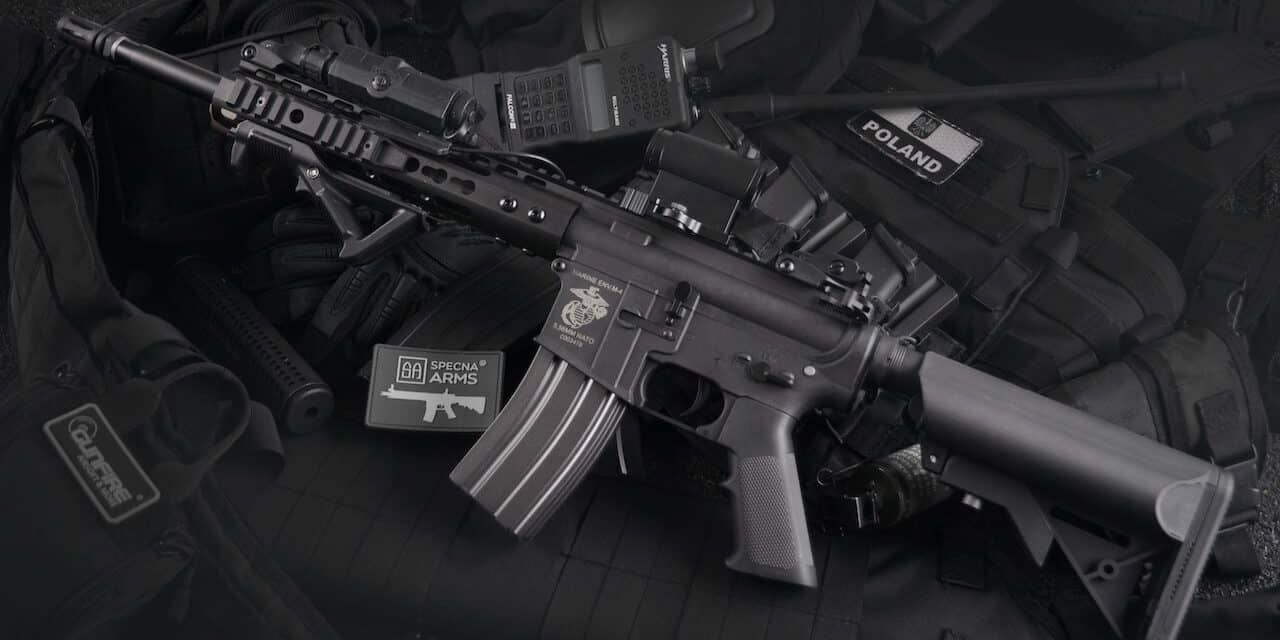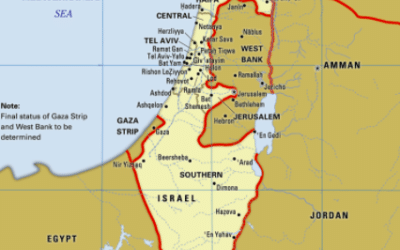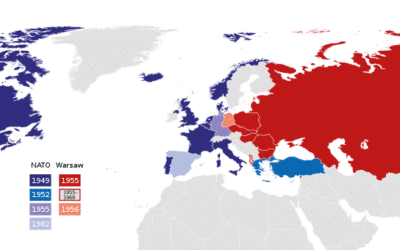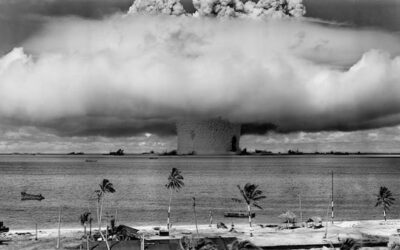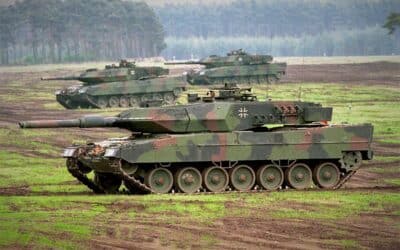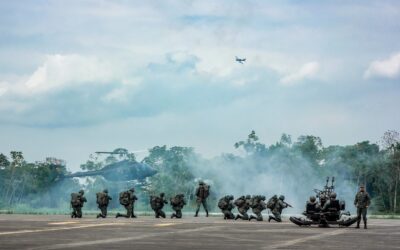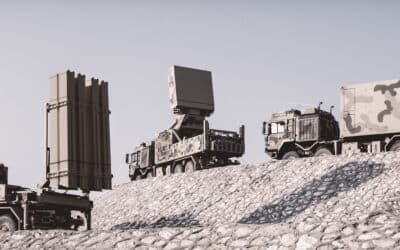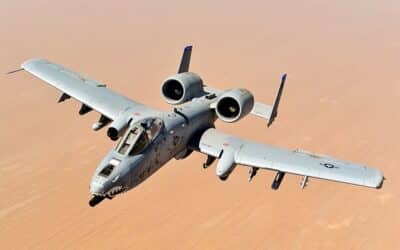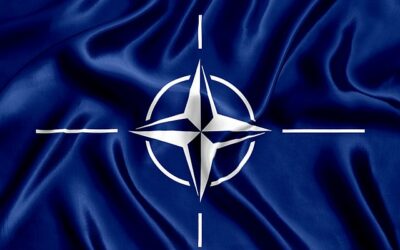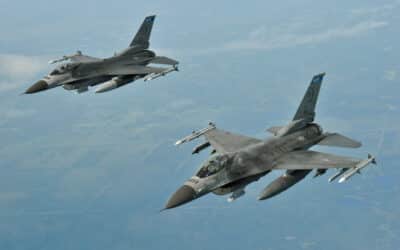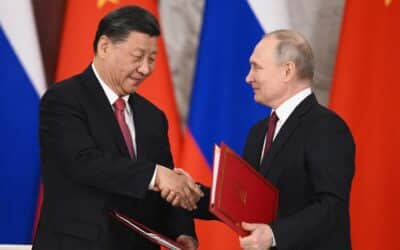Weapons of immense power have always intrigued many. From ancient battle axes to modern nuclear bombs, humanity’s capacity for destruction has grown exponentially over the centuries. Today’s post takes a deep dive into the 13 most powerful weapons in the world. These weapons, some of which have the power to obliterate entire cities, define the apex of military technology. This list goes beyond the typical firearms and tanks, venturing into the world of cutting-edge, high-powered weaponry. It’s a thrilling yet sobering exploration of the extremes of human ingenuity. So, let’s gear up and delve into the world of these formidable means of warfare.
What Makes a Weapon Powerful?
When it comes to the subject of powerful weapons, there are various factors that contribute to their effectiveness. From advanced technology to sheer destructive capabilities, these weapons have the potential to reshape the course of conflicts and impact the world on a large scale.
Technological Advancements and Innovation
In today’s rapidly evolving world, technology plays a crucial role in determining the power of a weapon. From sophisticated guidance systems to advanced materials, weapons are constantly being upgraded to enhance their precision, range, and lethality. The integration of cutting-edge technology allows these weapons to surpass their predecessors and provide a significant advantage on the battlefield.
Destructive Capabilities
Another aspect that defines the power of a weapon lies in its destructive capabilities. The ability to inflict massive damage in a short span of time can be a major determining factor. Weapons that possess immense firepower and can cause significant casualties not only instill fear in the enemy but also bring a decisive edge to military operations.
Range and Accuracy
Weapons with long-range capabilities are highly valued for their ability to strike targets from a safe distance. The ability to engage targets from afar provides a strategic advantage and reduces the risk to military personnel. Furthermore, accuracy is crucial in ensuring precision strikes and minimizing collateral damage. Weapons that exhibit exceptional accuracy are highly sought after due to their effectiveness in achieving mission objectives with minimal unintended consequences.
Versatility and Adaptability
A powerful weapon is one that can adapt to various scenarios and fulfill multiple roles. Versatility is essential in modern warfare, where situations can change rapidly and unpredictably. A weapon that can be employed in different environments, against various types of targets, and in different combat scenarios is highly desirable. The ability to adapt to different situations ensures that the weapon remains effective and valuable throughout its lifespan.
Strategic Significance
The strategic significance of a weapon cannot be overlooked. Some weapons possess the capability to alter the balance of power between nations and impact geopolitical landscapes. The possession of such weapons can deter aggression, provide leverage in negotiations, or even serve as a means of projecting influence on a global scale.
In conclusion, a powerful weapon is defined by a combination of factors, including technological advancements, destructive capabilities, range and accuracy, versatility, and strategic significance. These elements contribute to the overall effectiveness and impact of a weapon in the modern world. As we delve into the upcoming sections, we will explore some of the most powerful weapons that exist today and understand the immense potential they hold in shaping the future of warfare.
Nuclear Weapons
Nuclear weapons have had a profound impact on the course of history, shaping geopolitics and international relations. In this section, we will explore the history of nuclear weapons, the different types, and the countries that possess them.
History of Nuclear Weapons
The development of nuclear weapons began during World War II as a response to the growing threat posed by the Axis powers. The Manhattan Project, led by the United States, successfully created the first atomic bombs. These devastating weapons were dropped on the Japanese cities of Hiroshima and Nagasaki in 1945, leading to Japan’s surrender and the end of the war.
Since then, nuclear weapons have played a significant role in deterrence strategies between major powers. The arms race between the United States and the Soviet Union during the Cold War heightened the global nuclear threat and raised concerns about potential catastrophic consequences. The Cuban Missile Crisis in 1962 was a particularly tense moment that brought the world close to a nuclear war.
Types of Nuclear Weapons
Nuclear weapons come in various types, each with its own destructive capabilities and delivery systems. The two main categories are atomic and thermonuclear weapons.
Atomic weapons, also known as fission bombs, rely on the process of nuclear fission to release a massive amount of energy. These bombs utilize the splitting of atomic nuclei, such as uranium or plutonium, to create a chain reaction that leads to a powerful explosion. The atomic bombs dropped on Hiroshima and Nagasaki were of this type.
Thermonuclear weapons, also called hydrogen bombs or fusion bombs, are far more powerful than atomic bombs. They use a two-stage process in which the energy from a fission bomb triggers a fusion reaction, resulting in an exponentially greater release of energy. The destructive potential of thermonuclear weapons is several orders of magnitude higher than that of atomic bombs.
Countries with Nuclear Weapons
As of now, there are nine countries known to possess nuclear weapons. These countries are:
- United States: The United States was the first nation to develop and use nuclear weapons. It currently has the largest nuclear arsenal in the world.
- Russia: Successor to the Soviet Union, Russia possesses a significant number of nuclear weapons and is considered a major nuclear power.
- United Kingdom: The United Kingdom maintains a small but potent nuclear arsenal as part of its national defense strategy.
- France: France is the only country in the European Union that possesses nuclear weapons and has a policy of maintaining an independent nuclear deterrent.
- China: China possesses a moderate-sized nuclear arsenal and has adopted a no-first-use policy, vowing not to use nuclear weapons unless attacked.
- India: India is a nuclear-armed state and has declared a policy of no-first-use. Its nuclear weapons program is primarily aimed at deterrence.
- Pakistan: Pakistan developed nuclear weapons in response to perceived threats from India. It also follows a policy of no-first-use.
- North Korea: North Korea’s nuclear weapons program has sparked international concern and has been the subject of ongoing diplomatic efforts to denuclearize the Korean Peninsula.
- Israel: While it maintains a policy of ambiguity, Israel is widely believed to possess nuclear weapons. However, it has neither confirmed nor denied their existence.
The possession of nuclear weapons by these countries has created a delicate balance of power and has had a profound impact on global security. Efforts to prevent the proliferation of nuclear weapons and promote disarmament remain ongoing challenges for the international community.
In conclusion, nuclear weapons have been a defining feature of the modern world. Understanding their history, types, and the countries that possess them is crucial in comprehending the complexities of global politics and the ongoing efforts to maintain peace and stability.
Intercontinental Ballistic Missiles (ICBMs)
ICBMs, or Intercontinental Ballistic Missiles, are long-range missiles that are designed to travel vast distances and deliver devastating payloads to targets on the other side of the world. These missiles are powerful weapons capable of carrying various types of warheads, including nuclear, chemical, or conventional explosives.
What are ICBMs?
ICBMs are a type of ballistic missile specifically designed for long-range attacks. They are propelled into space by powerful rocket engines and then follow a trajectory that brings them back into the Earth’s atmosphere to strike their intended targets. These missiles are highly complex and require advanced guidance systems to ensure precision and accuracy.
Capabilities and Range of ICBMs
ICBMs are renowned for their incredible range and destructive capabilities. Their ability to travel thousands of kilometers in a relatively short period allows them to strike targets located on different continents. Such impressive range is achieved through the combination of powerful rocket engines, advanced guidance systems, and lightweight yet durable materials used in their construction.
The range of ICBMs can vary depending on the specific model and technology used. Some ICBMs have ranges of over 10,000 kilometers (6,213 miles) and can reach targets on the opposite side of the globe within minutes. These missiles can travel at extremely high speeds, often exceeding Mach 20 (15,000 miles per hour), making them virtually unstoppable once launched.
Major Countries with ICBMs
Several countries possess ICBMs as part of their strategic defense capabilities. These nations invest significant resources in the development, maintenance, and deployment of these formidable weapons. Below are some major countries known to possess ICBMs:
- United States of America (USA): The USA operates a robust ICBM program, with missiles such as the Minuteman III having a range of over 13,000 kilometers (8,078 miles). These missiles form a crucial part of the country’s nuclear deterrence strategy.
- Russia: Russia possesses one of the largest arsenals of ICBMs in the world. Their missiles, like the RS-24 Yars, have impressive ranges and can carry multiple warheads, making them highly potent strategic weapons.
- China: China has made significant advancements in its ICBM capabilities. Their missiles, such as the DF-41, have extensive ranges and can carry multiple independently targetable reentry vehicles (MIRVs), enhancing their effectiveness.
- India: India has developed ICBMs like the Agni series, which have ranges exceeding 5,000 kilometers (3,106 miles). These missiles contribute to India’s national security and deterrence strategy.
- North Korea: North Korea’s ICBM program has attracted international attention due to its rapid development. Missiles like the Hwasong-15 have been tested with ranges capable of reaching the continental United States.
- United Kingdom, France, and Israel: These countries possess ICBMs as part of their nuclear deterrence strategies, ensuring the protection of their national security interests.
ICBMs continue to play a significant role in shaping global geopolitics. The possession of these powerful weapons holds immense strategic value for countries, providing them with the ability to project force and deter potential adversaries. Their range and destructive potential make them a potent tool in the complex landscape of international relations.
Aircraft Carriers
Aircraft carriers have played a pivotal role in modern warfare, serving as mobile air bases that can project power across vast distances. These colossal vessels are often considered the crown jewel of naval forces, and their importance cannot be overstated. In this section, we will explore the significance of aircraft carriers and highlight some notable examples from around the world.
Importance of Aircraft Carriers
Aircraft carriers provide several key advantages in military operations. Firstly, they offer a strategic advantage by allowing nations to extend their reach far beyond their borders. By positioning aircraft carriers in different regions, countries can project air power and rapidly respond to threats or engage in offensive operations.
Secondly, aircraft carriers act as a force multiplier. The sheer number of aircraft they can carry, ranging from fighter jets to helicopters, allows for a diverse range of missions, such as air superiority, close air support, reconnaissance, and anti-submarine warfare. This versatility makes aircraft carriers an invaluable asset in maintaining regional stability and deterring potential adversaries.
Furthermore, aircraft carriers serve as a platform for power projection. The ability to launch and recover aircraft from the sea enables nations to swiftly deploy forces without the need for land-based infrastructure. This makes them an ideal choice for expeditionary operations and provides flexibility in responding to evolving security challenges.
Notable Aircraft Carriers in the World
- USS Nimitz (CVN-68), United States: The USS Nimitz, a nuclear-powered supercarrier, is one of the largest and most formidable aircraft carriers in the world. With a length of over 1,000 feet and a displacement of over 100,000 tons, it can support a wide array of aircraft and operate for extended periods without refueling.
- HMS Queen Elizabeth (R08), United Kingdom: The HMS Queen Elizabeth is the largest and most advanced carrier ever built for the Royal Navy. With its cutting-edge technology and ability to carry up to 72 aircraft, including the stealthy F-35B Lightning II, this carrier significantly enhances the UK’s global reach and maritime capabilities.
- INS Vikramaditya, India: Formerly known as Admiral Gorshkov, the INS Vikramaditya is a refurbished Soviet-era carrier that now serves as the flagship of the Indian Navy. With its extensive air wing and robust defensive systems, it strengthens India’s maritime security and acts as a powerful deterrent in the region.
- Liaoning (CV-16), China: The Liaoning, China’s first aircraft carrier, is a symbol of the country’s growing naval power. Originally built as the Soviet Kuznetsov-class carrier, it underwent significant refurbishment and modernization before being commissioned into the People’s Liberation Army Navy. It serves as a crucial asset in China’s aspirations for regional dominance.
- Charles de Gaulle (R91), France: The Charles de Gaulle is the only nuclear-powered aircraft carrier outside the United States. As the flagship of the French Navy, it possesses a formidable air group and serves as a vital tool for France’s global military reach and international commitments.
Aircraft carriers continue to evolve with advances in technology, shaping the future of naval warfare. These floating airfields play a critical role in projecting power, maintaining stability, and safeguarding national interests. With their ability to operate in any ocean, aircraft carriers remain a force to be reckoned with in the ever-changing dynamics of the modern world.
Stealth Bombers
Stealth bombers are some of the most advanced and powerful weapons in the world. These aircraft are specifically designed to have a low radar signature, making them difficult to detect and track. In this section, we will explore the fascinating world of stealth bombers, discussing their introduction and notable examples.
Introduction to Stealth Bombers
Stealth bombers are a crucial component of modern military strategies. These technologically advanced aircraft play a key role in both reconnaissance and combat missions. Their primary advantage lies in their ability to penetrate enemy defenses undetected, allowing them to deliver devastating blows without being detected.
The concept of stealth technology originated during the Cold War when the United States sought to develop aircraft that could bypass Soviet air defenses. The idea was to reduce an aircraft’s radar cross-section, making it virtually invisible to enemy radars. This led to the birth of the first stealth bomber, the iconic B-2 Spirit.
Notable Stealth Bombers
- B-2 Spirit: The B-2 Spirit, also known as the “Stealth Bomber,” is undoubtedly one of the most famous and advanced stealth bombers in the world. With its sleek and futuristic design, this aircraft is capable of carrying both conventional and nuclear payloads. Its stealth capabilities, combined with long-range capabilities, make it a formidable weapon in the skies.
- F-117 Nighthawk: While primarily known as a stealth fighter, the F-117 Nighthawk has also been utilized as a bomber. This iconic aircraft played a pivotal role during the Gulf War in 1991. Its unique and angular shape helped it evade enemy radar systems, allowing it to strike targets with precision.
- Su-57: The Su-57, developed by Russia, is their answer to the American stealth bombers. This fifth-generation fighter aircraft incorporates stealth technology, making it more difficult for enemy radars to detect. The Su-57’s stealth capabilities, combined with its agility and advanced weaponry, make it a significant player in the world of stealth bombers.
- Chengdu J-20: China’s Chengdu J-20 is another notable stealth bomber, often compared to the American F-22 Raptor. With its stealthy design and advanced avionics, the J-20 can carry out various missions, including air superiority and precision strikes. China’s advancements in stealth technology have made the J-20 a formidable competitor in the world of stealth bombers.
In conclusion, stealth bombers have revolutionized modern warfare, providing nations with the ability to strike with precision and remain undetected. The introduction of stealth technology, as showcased by the B-2 Spirit and other notable examples like the F-117 Nighthawk, Su-57, and Chengdu J-20, has forever changed the dynamics of aerial combat. These advanced aircraft are a testament to human ingenuity and the constant drive for military superiority.
Hypersonic Missiles
Hypersonic missiles are a fascinating and rapidly advancing technology that has captured the attention of military experts and enthusiasts alike. These missiles represent a significant leap forward in weapon systems, offering unprecedented speed and maneuverability. In this section, we will explore the key features of hypersonic missiles and discuss some recent developments in this exciting field.
Key Features of Hypersonic Missiles
Hypersonic missiles possess several key features that set them apart from their subsonic and supersonic counterparts. The most notable characteristic is their incredible speed, which exceeds Mach 5, or five times the speed of sound. This staggering velocity enables hypersonic missiles to cover vast distances in a matter of minutes, giving adversaries very little time to respond.
Another crucial aspect of hypersonic missiles is their ability to maneuver unpredictably during flight. Unlike traditional missiles, which follow a predictable trajectory, hypersonic missiles can change course rapidly, making them extremely difficult to intercept or defend against. Their agility and evasiveness pose a significant challenge to existing missile defense systems.
Additionally, hypersonic missiles often feature a combination of high-altitude and low-altitude flight profiles. They can ascend to the upper atmosphere, where they can take advantage of reduced air resistance, allowing them to achieve their remarkable speeds. Once at the target area, they can descend to lower altitudes, enhancing their ability to strike with precision.
Recent Developments in Hypersonic Missiles
In recent years, there have been significant advancements in hypersonic missile technology. Countries such as the United States, Russia, China, and others are actively investing in research and development to harness the immense potential of these weapons. Here are some notable recent developments:
- Hypersonic Glide Vehicles: One approach to hypersonic missiles involves using glide vehicles that are launched into space and re-enter the Earth’s atmosphere at hypersonic speeds. These vehicles can maneuver autonomously, making them highly elusive and capable of striking targets with pinpoint accuracy.
- Scramjet Engines: Scramjet engines, which operate at hypersonic speeds, are another critical advancement in this field. These engines use supersonic combustion to generate thrust, enabling sustained hypersonic flight. They have the potential to revolutionize the speed and range of future hypersonic missiles.
- Advanced Materials and Cooling Systems: The extreme speeds and temperatures experienced by hypersonic missiles require innovative materials and cooling systems. Researchers are exploring advanced materials that can withstand the intense heat generated during hypersonic flight, ensuring the structural integrity of the missiles.
- Integration of Artificial Intelligence: Artificial intelligence (AI) is being integrated into hypersonic missile systems to enhance their capabilities further. AI algorithms can optimize flight trajectories, improve target identification, and enable real-time decision-making during the complex mission.
As advancements in hypersonic missile technology continue to unfold, the geopolitical landscape is likely to be reshaped. The race to develop and deploy these weapons underscores the growing importance of speed, agility, and precision in modern warfare.
In conclusion, hypersonic missiles offer unprecedented speed and maneuverability, making them a highly sought-after weapon system. Their key features, such as incredible speed and evasive maneuverability, pose significant challenges for defense systems. Recent developments, including hypersonic glide vehicles, scramjet engines, advanced materials, cooling systems, and AI integration, are propelling this technology forward. The future implications of hypersonic missiles are immense, and their continued advancement will undoubtedly shape military strategies and global security in the years to come.
Cyber Weapons
Cyber weapons have become an increasingly concerning aspect of modern warfare as countries and organizations leverage the power of technology to carry out attacks and disrupt critical systems. In this section, we will explore the types of cyber weapons and delve into some examples of cyber attacks that have made headlines.
Types of Cyber Weapons
Cyber weapons encompass a wide range of tools and techniques that are designed to exploit vulnerabilities in computer systems, networks, and software. These weapons can be classified into various categories, each serving a specific purpose in the digital battlefield.
- Malware: Malicious software, or malware, is one of the most common types of cyber weapons. It includes viruses, worms, trojans, and ransomware. Malware infiltrates systems, compromising their integrity and allowing attackers to gain unauthorized access or control.
- Botnets: Botnets are networks of infected computers that are remotely controlled by a central command. These armies of compromised devices can be directed to launch distributed denial-of-service (DDoS) attacks, flooding targeted systems with traffic and rendering them inaccessible.
- Zero-day Exploits: Zero-day exploits refer to vulnerabilities in software that are unknown to the software vendor. Attackers exploit these weaknesses to gain unauthorized access or execute malicious code before a patch is released, giving them a significant advantage.
- Advanced Persistent Threats (APTs): APTs are sophisticated cyber attacks that are typically carried out over an extended period. They involve multiple stages, including reconnaissance, infiltration, and data exfiltration. APTs are often orchestrated by nation-state actors and target high-value assets.
Examples of Cyber Attacks
Now let’s examine some notable examples of cyber attacks that have demonstrated the destructive capabilities of cyber weapons:
- Stuxnet: Widely regarded as the first cyber weapon, Stuxnet was discovered in 2010. It targeted Iran’s nuclear program, specifically the centrifuges used to enrich uranium. Stuxnet infected systems through USB drives and exploited zero-day vulnerabilities to disrupt the operation of the centrifuges, causing physical damage to Iran’s nuclear infrastructure.
- WannaCry: In 2017, the WannaCry ransomware attack wreaked havoc worldwide. It exploited a vulnerability in Microsoft Windows and rapidly spread across networks, encrypting data and demanding ransom payments in Bitcoin. WannaCry affected hundreds of thousands of computers in over 150 countries, including critical infrastructure such as hospitals and transportation systems.
- NotPetya: NotPetya, another ransomware attack, struck in 2017 and caused massive disruption. Initially disguised as a ransomware attack, it quickly became apparent that its primary objective was to cause destruction rather than generate profit. NotPetya targeted Ukrainian organizations but spread globally, infecting computers in numerous countries and causing billions of dollars in damages.
In conclusion, cyber weapons pose a significant threat in today’s interconnected world. With various types of cyber weapons at their disposal, attackers have the ability to disrupt critical infrastructure, compromise sensitive data, and wreak havoc on a global scale. It is essential for governments, organizations, and individuals to invest in robust cybersecurity measures to defend against these ever-evolving threats. Stay vigilant, update your software regularly, and be cautious of suspicious online activities to help protect yourself from the potential harm brought about by cyber weapons.
Directed Energy Weapons
In today’s world, advancements in technology have paved the way for the development of powerful weapons that can shape the course of warfare. One such category of weapons that has gained significant attention is Directed Energy Weapons (DEWs). These cutting-edge weapons utilize directed energy, such as laser or microwave beams, to neutralize targets with precision and efficiency.
What are Directed Energy Weapons?
Directed Energy Weapons, also known as DEWs, are futuristic weapons that use concentrated energy to disable or destroy targets. Unlike conventional weapons that rely on bullets, explosives, or projectiles, DEWs harness various forms of energy, such as electromagnetic radiation, to direct and deliver a forceful blow to the intended target. The energy can be in the form of high-powered lasers, microwaves, or particle beams.
Different Types of Directed Energy Weapons
DEWs encompass a range of different types, each with its unique capabilities and applications. Here are some of the most prominent types of Directed Energy Weapons:
- High-Energy Lasers (HELs): These weapons use powerful lasers to produce a concentrated beam of light that can cause damage to a target. HELs can rapidly heat up a target’s surface, melting or burning through it, leading to destruction or disablement. They are effective against both airborne and ground-based threats.
- Microwave Weapons: Microwave weapons, also known as Radio Frequency (RF) weapons, emit high-frequency electromagnetic waves that can disrupt or damage electronic systems. They can be used to disrupt communication networks, disable enemy vehicles, or even cause physical harm to living organisms.
- Particle Beam Weapons: Particle beam weapons employ charged particles, such as electrons or ions, to create a focused stream of energy. These weapons can cause significant damage to both personnel and equipment by delivering a concentrated burst of kinetic energy. Particle beam weapons have the potential to be used in anti-missile systems or as anti-satellite weapons.
- Pulsed Energy Projectile (PEP): PEP weapons generate a pulsed laser beam or electromagnetic radiation that creates a burst of plasma upon impact. The resulting force and heat can incapacitate or deter targets without causing permanent harm. PEPs have the advantage of being non-lethal, making them suitable for crowd control or non-lethal warfare scenarios.
- Electromagnetic Pulse (EMP) Weapons: EMP weapons release a short burst of electromagnetic energy that can disrupt or disable electronic systems, including communication networks, power grids, and even vehicles. These weapons are particularly effective against modern, technology-dependent adversaries.
- Sonic Weapons: Sonic weapons employ high-intensity sound waves to incapacitate or disorient targets. These weapons can cause extreme discomfort, pain, or even permanent damage to hearing, making them effective for crowd dispersal or perimeter defense.
In conclusion, Directed Energy Weapons represent a new era of warfare, where the force of energy is harnessed and directed to neutralize targets with unparalleled precision and speed. As technology continues to advance, it is likely that these weapons will become more prevalent on the battlefield, reshaping the way conflicts are waged. The versatility and effectiveness of DEWs make them a formidable asset in the arsenal of modern militaries.
Biological Weapons
Biological weapons have a long and dark history, representing a unique and terrifying category of weaponry. In this section, we will delve into the history of biological weapons and explore some major biological weapons programs that have greatly impacted global security.
History of Biological Weapons
The use of biological weapons can be traced back centuries, with early instances of biological warfare documented in ancient times. One notable example is the use of diseased animal carcasses during sieges to spread infections and decimate enemy populations. However, the deliberate use of living organisms for warfare purposes gained significant attention during the twentieth century.
One of the most notorious incidents involving biological weapons occurred during World War I when both the Allies and the Central Powers attempted to use pathogens as a means of gaining an advantage. These attempts, though limited in their success, marked a turning point in the development and deployment of biological weapons.
Major Biological Weapons Programs
- Soviet Union’s Biopreparat: During the Cold War, the Soviet Union operated a massive biological weapons program known as Biopreparat. This secretive program aimed to develop and produce a wide range of deadly pathogens, including anthrax, smallpox, and plague. The vast scale and sophistication of Biopreparat made it one of the most extensive biological weapons programs in history.
- Japanese Unit 731: In the 1930s and 1940s, Imperial Japan conducted covert research on biological warfare, particularly through Unit 731. This covert unit carried out horrifying experiments on humans, including prisoners of war, to study the effects of biological agents. The research conducted by Unit 731 has left a dark mark on history and serves as a chilling reminder of the devastating potential of biological weapons.
- United States’ Offensive Biological Warfare Program: From the 1940s to the 1970s, the United States maintained an offensive biological warfare program. Operation Sea-Spray, a notable incident from this program, involved the release of bacteria into the atmosphere to simulate a biological attack on a coastal city. The program was eventually discontinued due to ethical concerns and international treaties.
- Aum Shinrikyo: The Japanese cult Aum Shinrikyo gained infamy in the 1990s for its attempt to use biological weapons to instigate mass casualties. Their failed attack using the nerve agent sarin in the Tokyo subway system overshadowed their concurrent plans to unleash anthrax and botulinum toxin. The Aum Shinrikyo case highlighted the grave threat posed by non-state actors seeking to utilize biological weapons.
In conclusion, the history of biological weapons is fraught with instances of attempted use and covert research. It is imperative for the global community to remain vigilant and committed to preventing the proliferation and use of these devastating weapons. The knowledge gained from these historical events should serve as a reminder of the potential consequences and the need for strict adherence to international norms and treaties regarding biological weapons.
Railguns: The Future of Warfare
Railguns are a fascinating and revolutionary technology that has the potential to reshape the future of warfare. The sheer power and speed of these electromagnetic weapons are truly awe-inspiring. In this section, we will explore how railguns work and their current applications. Let’s dive in!
How Railguns Work
Railguns operate on the principle of electromagnetic acceleration. They use a powerful electrical current to generate an intense magnetic field, which propels a projectile at incredible velocities. Instead of relying on traditional chemical propellants like gunpowder, railguns harness the force of electromagnetism to launch projectiles at hypersonic speeds.
The key components of a railgun include two parallel metal rails and a conductive projectile. When a powerful electrical current is applied to the rails, it creates a magnetic field between them. This magnetic field then interacts with the projectile, which completes the electrical circuit. As a result, an intense electromagnetic force is generated, propelling the projectile forward with tremendous force.
The speed at which railgun projectiles travel is mind-boggling. They can reach velocities exceeding Mach 7, or about 8,600 kilometers per hour! To put this into perspective, a railgun projectile could travel from New York to Los Angeles in just a matter of minutes. This incredible speed and range make railguns an ideal choice for long-range precision strikes.
Current Applications of Railguns
While railguns are still in the experimental phase and not widely deployed, they hold immense promise for future military applications. Here are a few areas where railguns are currently being explored:
- Naval Warfare: Railguns have the potential to revolutionize naval warfare by providing long-range, accurate, and cost-effective firepower. With their extended range and hypersonic speed, railguns could enable ships to engage targets from a safe distance, reducing the risk to the vessel and its crew.
- Missile Defense: Railguns could play a crucial role in missile defense systems. Their high velocity and precision make them ideal for intercepting incoming missiles, neutralizing threats before they can cause significant damage.
- Space Exploration: Railgun technology also holds promise for space exploration. The ability to launch payloads at incredibly high speeds could significantly reduce the cost and time required to send satellites and other equipment into space.
- Research and Development: Railguns are also being used for research and development purposes. Scientists and engineers are continually pushing the boundaries of this technology to develop even more powerful and efficient railgun systems.
In conclusion, railguns are a remarkable advancement in weaponry. Their ability to launch projectiles at hypersonic speeds has the potential to revolutionize warfare as we know it. While still in the experimental stage, railguns are showing great promise in various military applications. As research and development continue, we can only imagine the incredible possibilities that lie ahead for this cutting-edge technology.
Anti-Satellite Weapons
Anti-satellite weapons (ASAT) have emerged as a critical component of modern warfare. These advanced weapons systems are specifically designed to target and destroy satellites in space. In this section, we will explore the role of anti-satellite weapons and delve into some notable tests that have taken place.
Role of Anti-Satellite Weapons
Anti-satellite weapons play a crucial role in strategic military operations. They provide nations with the ability to neutralize or disable enemy satellites, which are vital for communication, intelligence gathering, navigation, and surveillance. By targeting and destroying these satellites, countries can disrupt their adversaries’ military capabilities, gaining a significant advantage in a conflict.
The development of anti-satellite weapons is driven by the increasing reliance on space-based assets in both military and civilian applications. As technology advances, so does the need to protect or destroy these assets. Anti-satellite weapons act as a deterrent against potential threats and serve as a means to maintain dominance in the space domain.
Notable Anti-Satellite Weapons Tests
Several notable anti-satellite weapons tests have taken place over the years, demonstrating the capabilities and effectiveness of these systems. Let’s explore a few of them:
- Operation Hardtack-Teak (United States, 1958): This was the first successful test of an anti-satellite weapon. A missile was launched from a naval vessel and successfully intercepted and destroyed a satellite in low Earth orbit.
- Fengyun-1C Destruction (China, 2007): China conducted a test that involved launching a missile to destroy an aging weather satellite. This demonstration highlighted China’s growing anti-satellite capabilities and raised concerns about the creation of space debris.
- Mission Shakti (India, 2019): India successfully conducted an anti-satellite missile test by shooting down one of its own satellites in low Earth orbit. This test showcased India’s technological prowess and marked its entry into the elite club of nations possessing anti-satellite capabilities.
- Nudol ASAT System (Russia, Ongoing): Russia has been developing an anti-satellite system known as Nudol. While details about its capabilities remain classified, the system is believed to have the ability to intercept and destroy satellites in various orbits.
These tests highlight the advancements made by different nations in the field of anti-satellite weaponry. As the space domain becomes increasingly congested, the development and deployment of such systems will continue to shape the future of warfare.
In conclusion, anti-satellite weapons have become an integral part of modern military strategies. Their role in neutralizing enemy satellites and disrupting adversaries’ capabilities cannot be underestimated. The notable tests conducted by various nations underscore the significance of these weapons in maintaining strategic superiority in the space domain.
Ballistic Missile Defense Systems
Ballistic Missile Defense Systems are a crucial component of a nation’s defense strategy. These systems are designed to protect against the threat of ballistic missiles, which can cause significant damage and loss of life. In this section, we will explore the purpose of Ballistic Missile Defense Systems and highlight some of the prominent systems used around the world.
Purpose of Ballistic Missile Defense Systems
The primary purpose of Ballistic Missile Defense Systems is to detect, track, and intercept incoming ballistic missiles. These systems aim to neutralize the threat posed by these missiles before they reach their intended targets. By doing so, they help safeguard civilian populations, military installations, and critical infrastructure from potential devastation.
Ballistic missiles can be launched from various platforms, including land, sea, and air. They are capable of delivering nuclear, chemical, or conventional warheads over long distances at high speeds. The destructive potential of ballistic missiles makes it imperative for nations to have effective defense systems in place.
Prominent Ballistic Missile Defense Systems
Several countries have developed their own Ballistic Missile Defense Systems to enhance their national security and protect their interests. Here are a few notable systems:
- United States: Ground-based Midcourse Defense (GMD) The GMD system is designed to defend against long-range ballistic missile threats. It employs interceptors that are launched from underground silos to intercept and destroy incoming missiles in space.
- Russia: A-135 The A-135 system is Russia’s national defense against ballistic missiles. It incorporates various radar systems and interceptor missiles to counter potential threats.
- Israel: Iron Dome, The Iron Dome, is a unique mobile air defense system that provides protection against short-range rockets and artillery projectiles. It uses advanced radar and interceptor missiles to intercept and destroy incoming threats.
- China: HQ-19 The HQ-19 is China’s land-based mid-course defense system. It is designed to intercept and destroy medium-to-long-range ballistic missiles during their mid-course phase.
- Japan: Aegis Ashore Japan’s Aegis Ashore system is a land-based version of the Aegis Ballistic Missile Defense System. It utilizes powerful radar and interceptor missiles to defend against medium-range ballistic missiles.
These are just a few examples of Ballistic Missile Defense Systems used around the world. Each system is tailored to the specific needs and threats faced by the respective country.
In conclusion, Ballistic Missile Defense Systems play a critical role in protecting nations from the devastating impact of ballistic missiles. By detecting, tracking, and intercepting these missiles, these defense systems help ensure the safety and security of both civilian populations and military assets. With advancements in technology, these systems continue to evolve, providing enhanced protection against evolving threats in the global security landscape.
Autonomous Weapons
Autonomous weapons are an emerging technological advancement that has garnered much attention and debate in recent years. These weapons, also known as “killer robots,” are designed to operate on their own without human control or intervention. In this section, we will explore the definition and capabilities of autonomous weapons, as well as the ethical concerns surrounding their use.
Definition and Capabilities of Autonomous Weapons
Autonomous weapons are a category of military technology that possess the ability to select and engage targets without direct human input. They rely on advanced algorithms, sensors, and artificial intelligence to make decisions and carry out tasks traditionally performed by human operators.
These weapons come in various forms, including unmanned aerial vehicles (UAVs), ground-based robots, and naval vessels. Equipped with sophisticated sensors, such as cameras, radars, and GPS systems, autonomous weapons can gather and analyze information to identify potential threats and engage in combat.
The capabilities of autonomous weapons extend beyond mere target identification. They can navigate complex environments, adapt to changing circumstances, and engage multiple targets simultaneously. With their speed, precision, and potentially unlimited endurance, these weapons have the potential to revolutionize warfare.
Ethical Concerns with Autonomous Weapons
While the technological advancements of autonomous weapons offer potential military advantages, they also raise significant ethical concerns. The deployment of these weapons can challenge fundamental principles of warfare, such as the distinction between combatants and non-combatants, proportionality, and accountability.
One of the main ethical concerns is the lack of human control over the decision-making process. With autonomous weapons making split-second choices on who to target and engage, there is a potential for unintended consequences and civilian casualties. The absence of human judgment and empathy can lead to tragic outcomes and the violation of internationally recognized humanitarian laws.
Another concern is the potential for autonomous weapons to be hacked or manipulated by adversaries. These weapons rely on complex computer systems, which are susceptible to cyberattacks. If compromised, they could be turned against their own operators or used to target innocent civilians, leading to unpredictable and devastating consequences.
The development and use of autonomous weapons also raise questions about accountability and responsibility. In the event of an incident or violation of laws of war, who should be held accountable? Without a human operator directly involved in the decision-making process, legal and ethical responsibility becomes blurred, making it challenging to assign blame or seek justice.
In conclusion, autonomous weapons represent a remarkable advancement in military technology with the potential to transform warfare. However, the ethical concerns surrounding their use cannot be ignored. It is crucial for policymakers, military experts, and society as a whole to engage in a thoughtful and informed discussion about the development, deployment, and regulation of autonomous weapons to ensure their responsible and ethical use in the future.
Conclusion
In conclusion, the 13 most powerful weapons in the world are a testament to humanity’s ability to innovate and create destructive capabilities. These weapons possess immense power and serve various purposes, ranging from defense to deterrence. However, it is crucial to remember that with great power comes great responsibility.
Related Articles
10 Best Handguns for Self-Defense
When it comes to...
The Truth About Sanctions: Why Don’t They “Work”?
In 2022,...
History of Israel-Palestine Conflict
Israel and...
After the WAR initiated by HAMAS on October 7th, the Middle East will not be the same
On the -th of...
The Israeli army is prepared for an offensive on the Gaza Strip, involving attacks from “air, sea, and land.”
The IDF (Israel...
War in Israel: Current Developments – Video
Rafah...
Russia vs USA: Who Would Win in a Potential War?
In the...
NATO vs China: Who Would Win in a Potential War?
In the realm of...
11 Best Assault Rifles in the World
Welcome to a world...
Yevgeny Prigozhin (Wagner founder) is dead
According...
What You Need to Know About Joining NATO
Has any country...
Terrifying Realities of a Potential Nuclear War
The Devastating...
What to Do in Case of a Nuclear Attack
What to Do in Case...
11 Strongest and Most Powerful Navies in the World
When it comes to...
The Most Powerful Nuclear Weapons
The sheer power...
Understanding the Nature of War – The Clash of Wills
War is the...
Ukrainian Defense Forces Celebrate One-Year Anniversary of Kherson Region Liberation
Around one year...
Prigozhin First Video Speech After Unsuccessful Uprising
Following a recent...
11 Best Sniper Rifles in the World
Important Factors...
What is Russia saying about the war in Ukraine, Episode 1
Did you ever...
What is Happening in Russia, Episode 3
Welcome to the...
What is Happening in Russia, Episode 2
Have you ever...
10 Strongest Tanks in the World
Tanks represent...
10 Strongest Armies in the World
When it comes to...
Putin: We cannot stop the fire when they advance on us!
Putin ten...
10 Best Air Defence Systems in the World
Image:...
Alexei Navalny Letters From Prison
Image:...
Ukraine’s Struggle for Survival and Western Dependency
Ukraine has long...
What is Happening in Russia, Episode 1
Have you ever...
10 Strongest Fighter Jets in the World
Image:...
10 Strongest NATO Members
Image:...
Mobilized Soldiers Expose Dire Conditions and Neglect in Deployment to Luhansk
source:...
Why is everything so poor and sad in Russia?
Image:...
Tensions Escalate in Northern Kosovo as Serbian President Mobilizes Army
Image:...
Putin’s Russia and the Need for a Fresh Security Approach in Europe
Image:...
DeSantis Declares Presidential Bid with Elon Musk
Image:...
Russian military personnel shelled the Zaporizhia Nuclear Power Plant
Image:...
Prigozhin Revelations The Truth Behind the Capture of Bakhmut
Image:...
President Zelensky Visit G7 Turning Point in Russia-Ukraine War
Image:...
Turning a Blind Eye No More: Zelensky’s Bold Stand Against Crimean Annexation
Unfortunately,...
Navigating the Fluidity of War and Geography: Insights and Strategies
War is Geography:...
Latest Updates on Russian Invaders’ Activities in Occupied Territories
Russian Invaders...
US Denies Ukrainian Pilots Training on F-16 Fighter Jets
Complexities of...
West Strong Support for Ukraine’s Recovery and Containment of Russia
Kremlin's Failed...
Ukraine Supreme Court Chairman Confronts Allegations of Blatant Bribery
Vsevolod Knyazev...
Gold Coin Treasure from Alexander the Great Era found in Annexed Crimea
Crimea's Hidden...
Rishi Sunak Hails Zelenskyy as a Modern-Day Churchill
Volodymyr...
The Moral Factor in War: Ukraine’s Key to Victory
"We were actively...
The West’s Triumph in the New Cold War: Technology of Freedom Wins Out
The Chinese leader...
The Illusion of Power: How Putin’s Russia is Making the Same Mistakes as its Past Leaders
Modern Russia and...
